On 4 January 1663/4 Elizabeth Blackett, eldest child of Sir William Blackett, married Timothy Davison, a wealthy Newcastle merchant. The marriage in 1739 of their granddaughter Mary Davison to Sir Robert Eden produced a line of descent that includes a surprisingly large number of notable figures, and which amply illustrates the web of family connections linking different parts of the British establishment at the time. (For a list of Prime Ministers with family links to the Blacketts please click here)

In 1803 Catharine Eden, Elizabeth Blackett’s great-great granddaughter, married Robert Duncombe Shafto M.P., who added the name “Eden” as a result of the marriage. He was the son of Robert Shafto (abt. 1732-1797) probably the subject of the well-known nursery rhyme “Bobby Shafto’s Gone to Sea".
The song is said to relate how Bobby Shafto (frequently spelled "Shaftoe") broke the heart of Bridget Belasyse when he decided to marry Anne Duncombe. Robert Shafto’s supporters added additional lyrics to the song during the 1761 election campaign.
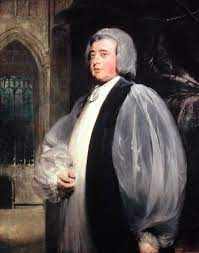
Catherine Eden, a great-granddaughter of Elizabeth Blackett, married in 1770 Rev. Dr. John Moore. At the time of his marriage Rev. Moore was Rector of Ryton, Co. Durham, but his career swiftly advanced and on 26 April 1783 he became the 88th Archbishop of Canterbury. His tenure of office (1783-1805) was not without controversy and was described by Hartley Withers in his 1897 2nd edition of “The Cathedral Church of Canterbury” as follows:
“Although a promoter of Sunday-schools and foreign missions, he did not escape reproach for paying undue regard to the interests of his family. It has been well said that during his tenure of office and that of his immediate successor, the sinecures and pluralities held by the highest clergy were worthy of the medieval period.”
Certainly at least two of his sons entered the clergy, one of whom, Robert Moore, attracted some adverse comments himself. In 1854 an American visitor to England, Dr. Pleasant Jones, reported on the wealthy state of some of the senior members of the Anglican clergy. About Rev. Robert Moore he wrote:
“Robert Moore, a prebend of Canterbury Cathedral, is one of the sons of Archbishop Moore. This archbishop, about fifty years ago, gave his son a sinecure office in the Prerogative Court of Canterbury, worth only £10,894 per annum. . . . . . . On reference to Sir Benjamin Hall’s penny letter, we find that in seven years, ending 1850, his Grace’s gross income was £210,134 8s. 4d.; his net income, £160,984 7s. 8d.; income from fines for seven years, £83,951 12s. 7d.; and his average salary, poor man, only £22,907 15s. 4 1/2d. a-year! How his Grace manages to sustain life upon such a paltry, unworthy income, we are totally at a loss to discover. . . . .”

In 1821 Caroline Eden, Elizabeth Blackett’s 3xgreat-granddaughter married Sir Hyde Boteler Parker, the son of Admiral Sir Hyde Parker (1739-1807). Admiral Parker, who was in command at the Battle of Copenhagen in 1801, ordered his second-in-command, (then) Vice-Admiral Horatio Nelson, to disengage from the action. Nelson famously raised his telescope to his blind eye to ignore the order, thus giving rise to the phrase to “turn a blind eye” to something. (At the Battle of Trafalgar, four years later, Nelson’s second-in-command was his close friend Admiral Lord Cuthbert Collingwood, (see Naval Blacketts), husband of Sarah Blackett.)
The link to Earl Grey, Prime Minister 1830-1834, through his great-grandson, Charles Lambton, has been mentioned in Blacketts in Politics, but there are two further connections. In 1888 Lady Harriet Castalia Godolphin Osborne, a 5xgreat-granddaughter of Elizabeth Blackett, married Henry Frederick Compton Cavendish, a great-grandson of Earl Grey. Four years earlier Harriet’s elder brother, George Godolphin Osborne, 10th Duke of Leeds, had married Lady Katherine Frances Lambton, the younger sister of Charles Lambton and another great-grandchild of Earl Grey.
Charles and Katherine Lambton also provide a link with yet another Prime Minister, their great-uncle, Earl Russell, who occupied the office 1846-1852 and 1865-1866. And to complicate matters still further, Earl Russell was also the brother-in-law of Louisa Blackett the daughter of Sir Edward Blackett (1805-1885). Earl Russell was also the grandfather of the Nobel prize winning philosopher Bertrand Russell.

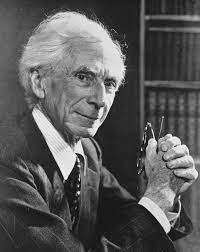
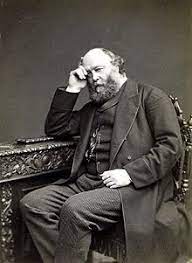
As if more proof were needed of the interconnection of the political families around that time, in 1923 George and Katherine’s daughter, Lady Gwendolen Fanny Godolphin Osborne, married Algernon Cecil, the nephew of Robert Arthur Talbot Gascoyne-Cecil, 3rd Marquess of Salisbury, Prime Minister 1885-1886, 1886-1892, and 1895-1902.
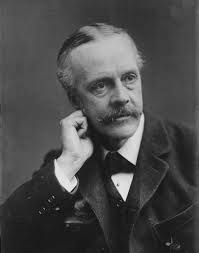
In 1887 Robert Gascoyne-Cecil appointed his nephew, Arthur James Balfour as Chief Secretary for Ireland, widely believed to be the origin of the phrase “Bob’s Your Uncle”, although the phrase does not appear to have come into widespread use until around the time of Balfour’s death in 1930. Balfour, a 1st cousin of Algernon Cecil, was himself Prime Minister from 1902 to 1905 (see Blacketts in Politics).
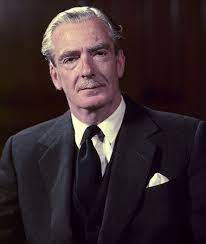
Sir Robert Eden and Mary Davison were 3xgreat-grandparents of Sir (Robert) Anthony Eden, Earl of Avon, Prime Minister 1955-1957. Sir Anthony Eden had had a distinguished political career for 20 years before finally becoming Prime Minister in 1955, but his tenure was marred by the ill-fated Suez campaign of 1956. Eden and Balfour are the only Prime Ministers actually descended from Blacketts that we have discovered.
It is through the Eden line that connections to three further Prime Ministers can be established.

In 1824 Robert Henry Eden Henley, 2nd Baron of Chardstock, a great-great-grandson of Elizabeth Blackett, married Harriet Eleonora Peel, younger sister of Sir Robert Peel, Prime Minister 1834-1835 and 1841-1846. Peel was responsible for the introduction of the first properly organised police force, thus giving rise to policemen being known as “Bobbies”, (or in Ireland “Peelers”). He oversaw the foundation of the modern Conservative Party (which replaced the old Tory Party) and was responsible for the repeal of the Corn Laws. A second connection to Sir Robert Peel arises through the 1846 marriage of his neice, Julia Emily Augusta Peel to Anthony Henley, 3rd Baron Henley of Chardstock, a 3xgreat-grandson of Elizabeth Blackett.

In 1850 Charlotte Maria Eden, the 3xgreat-granddaughter of Elizabeth Blackett, married Dudley North, great-nephew of Lord North, Prime Minister 1770-1782. Lord North held office during most of the American War of Independence and was the first ever Prime Minister to be forced out of office by a vote of no confidence, following the British defeat at Yorktown. In 1774 Lord North would have been a near neighbour of William Eden, 1st Baron Auckland, Charlotte’s great-uncle, who in that year gave his address as “Downing Street, Westminster”. (Some of the houses in Downing Street were at the time privately owned, though not, of course, “Number Ten”.)

And in 1893 John Henry Eden a 4xgreat-grandson of Elizabeth Blackett, married Lady Florence Lowry-Corry, a great-niece of William Ewart Gladstone, Prime Minister 1868-1874, 1880-1885, 1886 and 1892-1894. Gladstone was known to his supporters as the “Grand Old Man” or G.O.M. (which his arch-rival, Benjamin Disraeli, maintained stood for “God’s Only Mistake”). Unlike Disraeli, Gladstone did not always enjoy good relations with Queen Victoria, who once famously complained that “He always addresses me as if I were a public meeting".
A further illustrious branch of the line stems from the marriage in 1824 of George Godolphin Osborne, 8th Duke of Leeds, 3xgreat-grandson of Elizabeth Blackett, to Harriet Emma Arundel Stewart. Harriet was the illegitimate daughter of Lady Henrietta Frances Spencer by Granville Leveson-Gower, 1st Earl Granville. Henrietta, (whose sister Georgiana was the daughter-in-law of William Cavendish, 4th Duke of Devonshire, Prime Minister 1756-1757), was married at the time to Frederick Ponsonby, 3rd Earl Of Bessborough. In 1785, six years before the birth of Harriet, Henrietta and Frederick had had a daughter,

Harriet’s half-sister Lady Caroline Ponsonby, who in 1805 married William Lamb, 2nd Viscount Melbourne, who later served as Prime Minister in 1834 and from 1835 to 1841.
Lord Melbourne, after whom the Australian city was named, was Prime Minister when the young Queen Victoria ascended the throne and was a great influence on her. His private life, however, had not been without scandal through the well-publicised affair of his wife Caroline with the poet Lord Byron (see Blacketts and poetry). The tragic story of Lady Caroline Lamb was recounted, (with some historical inaccuracies), in the film of that name released in 1972, starring Sarah Miles and written and directed by her then husband Robert Bolt. Amongst the cast of the film was Sir Laurence Olivier (see below).

Lord Melbourne was not the only member of the Lamb family with connections to high political office, as his sister, Emily Mary Lamb, married in 1839 Henry John Temple, 3rd Viscount Palmerston, Prime Minister 1855-1858 and 1859-1865.

Among his many achievements Palmerston was influential in establishing Belgium as an independent nation, and his robust style of dealing with foreign powers spawned the phrase “gunboat diplomacy”. He famously said of the Schleswig-Holstein Question that only three people had ever understood it: one had died, one had gone insane and the third had forgotten it. Following his death he was given a State Funeral.
Lady Henrietta Frances Spencer mentioned above provides the links to three particularly notable personalities, whose public lives require no further elaboration.
-

(a) Sir Winston Leonard Spencer Churchill, Prime Minister 1940-1945 and 1951-1955, was Henrietta’s 2nd cousin 4xremoved. Both descended from Charles Spencer, 3rd Earl of Sunderland, and Lady Anne Churchill. Sir Winston’s great-great grandfather George Spencer, 5th Duke of Marlborough, changed the name from Spencer to Spencer-Churchill in 1817, and Lord Randolph Henry Spencer-Churchill, Sir Winston’s father, is said to have dropped the use of the hyphen, although it does not appear in the parish record of the 1819 marriage of his grandfather.
-
(b) Henrietta was also the 4xgreat-aunt of Lady Diana Frances Spencer who married in 1981 H.R.H. Charles Philip Arthur George Windsor, then Prince of Wales and heir to the throne. Their two sons, Princes William and Harry, are therefore 1st cousins 5xremoved of Lady Caroline Lamb. Their blood relationship to the Blacketts, however, stems from their descent through H.R.H. Prince Charles from King Malcolm III of Scotland (please see the introductory page of Blackett Family Tree
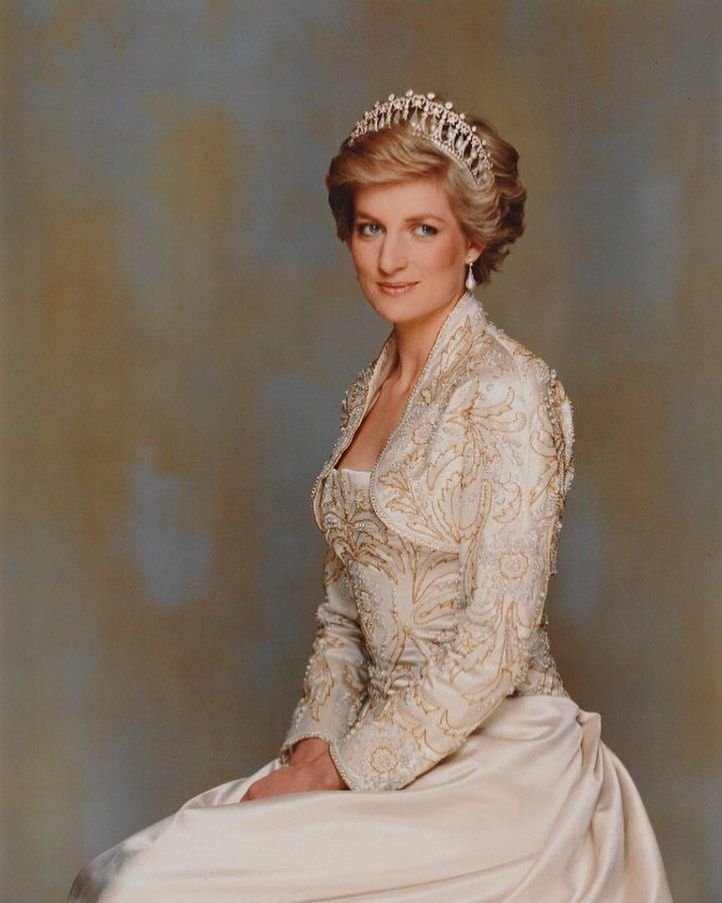

- (c) the third link arises through the 1908 marriage of Henrietta’s great-great-granddaughter Lady Dorothy Beatrix Godolphin Osborne to Patrick Bowes-Lyon, 15th Earl of Strathmore. He was the eldest brother of Lady Elizabeth Angela Marguerite Bowes-Lyon, later H.M. Queen Elizabeth the Queen Mother. Lady Dorothy can also claim direct descent from the Blacketts as she was the 6xgreat-granddaughter of Elizabeth Blackett. An 11th cousin 1xremoved of Patrick Bowes-Lyon, 15th Earl of Strathmore is Tony Blair, (see Blackett family connections to Prime Ministers of the United Kingdom).

Two more connections to the Blacketts via the Eden line are worthy of note. Sir Thomas Robert Tighe Chapman, 4xgreat-grandson of Elizabeth Blackett, was an Anglo-Irish baronet. Having previously fathered four daughters by his marriage to Edith Sarah Hamilton-Boyd, he lived for many years with his daughters’ former governess, Sarah Junner, the illegitimate daughter of John Lawrence and Elizabeth Junner. Sarah had adopted her father’s name, and Sir Thomas also took the name of Lawrence.
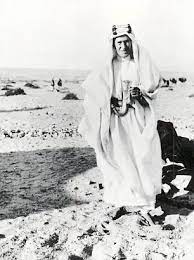
The couple never married, but their five sons also bore the name of Lawrence. The second son, Thomas Edward (T.E.) Lawrence, was better known as “Lawrence of Arabia”, following his part in the Arab revolt against the Ottoman Empire in 1916-1918, as recounted in his 1922 book “Seven Pillars of Wisdom” and in the 1962 film of his life, starring Peter O’Toole in the title role. (The script was co-written by Robert Bolt, who also wrote and directed “Lady Caroline Lamb” – see above.)
And in 1861 Rev. Dacres Olivier married Emma Selina Eden, 4xgreat-granddaughter of Elizabeth Blackett. Rev. Olivier was the great-uncle of Laurence Kerr Olivier, later Lord Olivier, the internationally-renowned actor, whose father and grandfather, as well as several other male relatives, were also members of the Anglican clergy. His 1st cousin 1xremoved, Rev. Henry Eden Olivier, was an Honorary Canon of Canterbury.
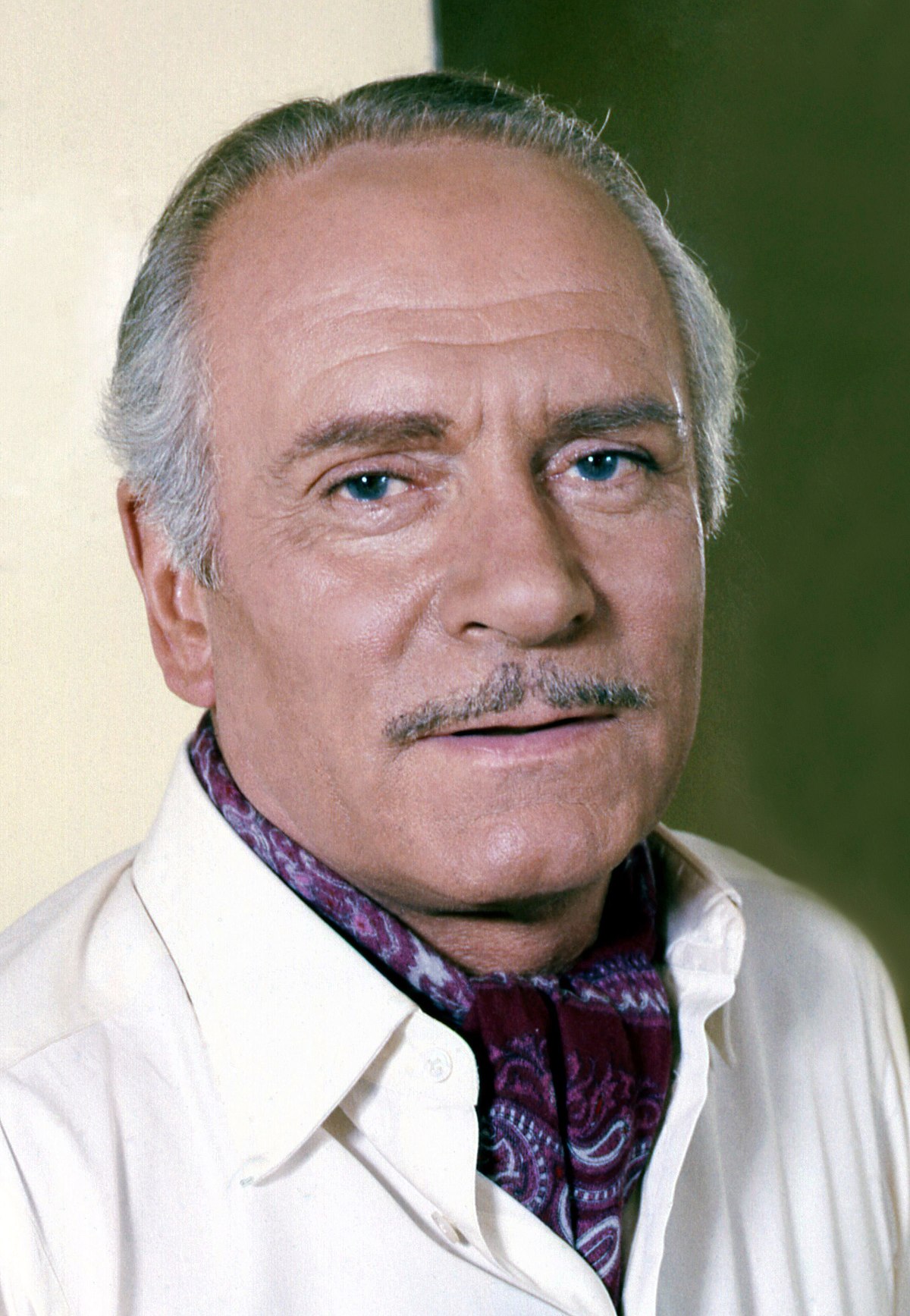
Laurence Olivier is widely regarded as the greatest actor of the 20th century and among the many Shakespearean roles he played was Macbeth, the 1st cousin 27xremoved of his great-aunt Emma. In Shakespeare’s play, (largely, though not entirely, based on historical fact), Macbeth murders his cousin, King Duncan, who was Emma’s 25xgreat-grandfather through her Blackett line of ancestry. Even had Olivier been aware of that, given the remoteness of the relationship between him and Duncan, it is doubtful if it would have affected his performance too much. Strangely, although he appeared in “The Scottish Play” (as Macbeth is superstitiously called by the acting profession) in supporting roles in 1925 and 1928, he only seems to have played the title role twice, in 1937 at The Old Vic and in 1955 at the Shakespeare Memorial Theatre, Stratford-upon-Avon.
